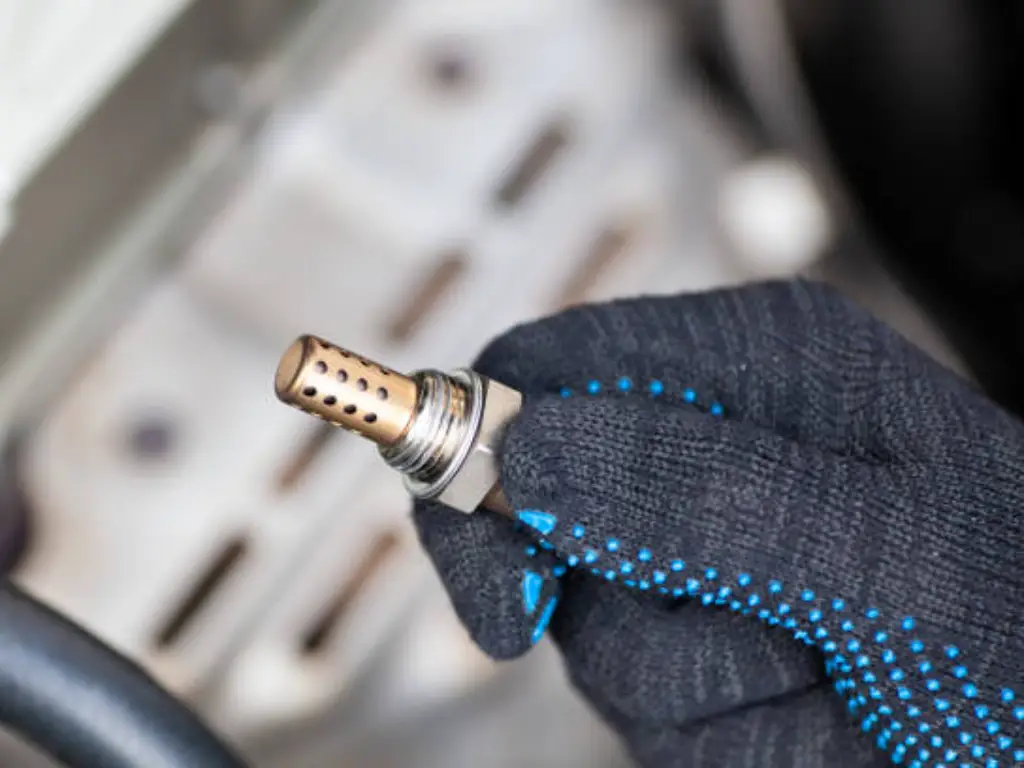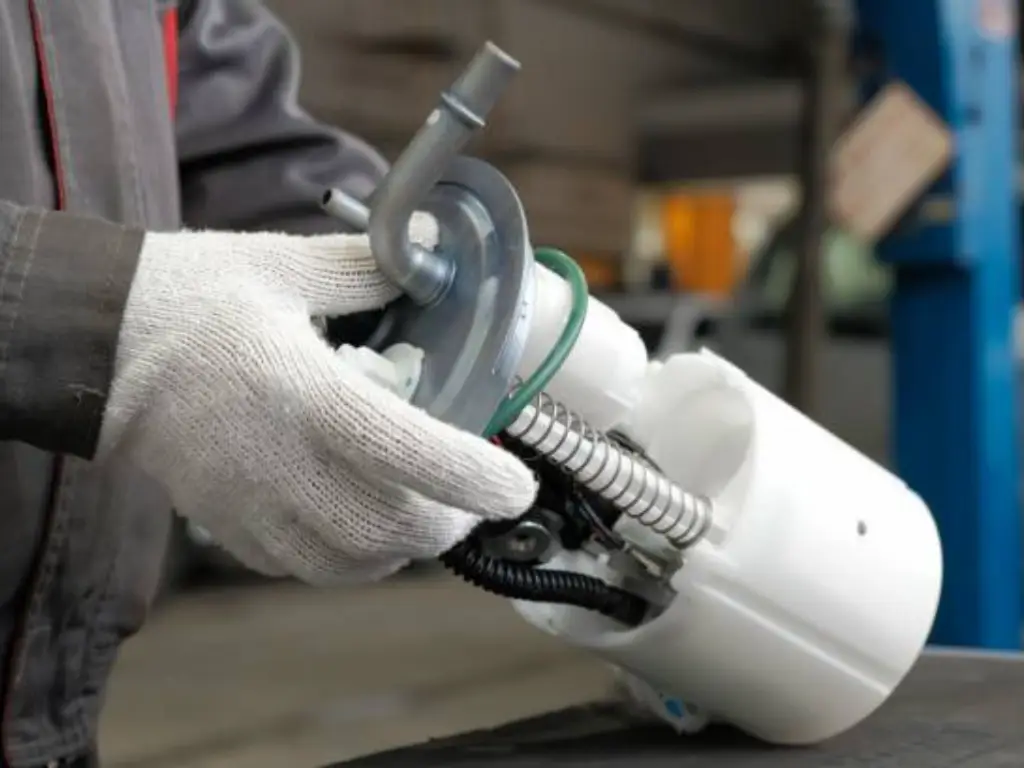Every day, countless vehicles hit the roads, each one needing maintenance and parts to keep running smoothly. Whether it’s a simple oil change or a complete brake overhaul, car owners are constantly on the lookout for reliable sources for their auto needs. If you’re passionate about cars and eager to tap into a thriving market, learning how to start a auto parts store store can turn your enthusiasm into a rewarding business venture. In this business guide, we will explore essential steps to launching your store and you’ll gain insights into the different types of aftermarket parts and how to create an effective online presence that attracts customers.

Automotive Aftermarket Market in 2024 Overview
Der Kfz-Ersatzteilmarkt steht vor einem deutlichen Wachstum 2024, driven by various factors, including changing consumer behaviors, technological advancements, and increasing vehicle ownership. According to a recent report by Forschung und Märkte, Der weltweite Kfz-Ersatzteilmarkt wird voraussichtlich übersteigen $1.1 Billion von 2024, reflecting a compound annual growth rate (CAGR) von ca 3.5% aus 2020 Zu 2024.
Several key trends are shaping this expansion:
- Steigendes Fahrzeugalter: Mit zunehmendem Alter der Fahrzeuge, Die Nachfrage nach Ersatzteilen und Wartungsdienstleistungen steigt. Der Durchschnittsalter der Fahrzeuge Unterwegs in den USA. erreicht 12.1 Jahre In 2022, aufwärts von 11.9 Jahre In 2021, laut der IHS Markit Bericht. Ältere Fahrzeuge erfordern in der Regel häufigere Reparaturen und den Austausch von Teilen, which directly benefits aftermarket suppliers.
- Wachstum im E-Commerce: Die Verlagerung hin zum Online-Shopping verändert weiterhin die Aftermarket-Landschaft. Staatsmann projects that the online automotive parts market will surpass $20 Milliarde von 2024, fueled by convenience and competitive pricing. E-commerce platforms have made it easier for consumers to access a wide range of products, driving sales growth in this channel.
- Electric Vehicles (EVs) Auswirkungen: The rising popularity of electric vehicles is also influencing the aftermarket. As more consumers adopt EVs, there’s a growing demand for specialized parts and services tailored to these vehicles. Der International Energy Agency (IEA) predicts that global EV sales will exceed 25 million von 2025, further diversifying the aftermarket.
- Technological Innovations: The integration of advanced technologies, such as telematics and diagnostics tools, is transforming how consumers interact with their vehicles. These technologies enable predictive maintenance, allowing drivers to address potential issues before they escalate. Infolge, consumers are more likely to seek aftermarket services and parts, driving market growth.
- Rising Consumer Awareness: There is a growing awareness among consumers about the importance of vehicle maintenance and the availability of aftermarket parts. This trend is supported by increased access to information through online resources and social media, leading to more informed purchasing decisions.
Various Types of Aftermarket Auto Parts Businesses
The automotive aftermarket encompasses a diverse range of businesses that cater to various consumer needs, from essential replacement parts to specialized accessories. Understanding the different types of aftermarket auto parts businesses and their channels—both offline and online—can help aspiring entrepreneurs navigate this dynamic market.
1. Retail Auto Parts Stores
Traditional retail auto parts stores are brick-and-mortar establishments that provide a wide range of auto parts and accessories directly to consumers. These stores typically stock essential components like batteries, Filter, brake pads, and fluids. Examples include national chains like Autozone, O’Reilly Auto Parts, Und Napa Autoteile. These businesses often benefit from established brand recognition and can offer expert advice and personalized service to customers.
2. Online Auto Parts Retailers
E-commerce has transformed the auto parts industry, with many consumers opting to purchase parts online for convenience and competitive pricing. Online retailers such as RockAuto, AutoPartsWarehouse, Und Amazon offer vast selections of aftermarket parts, often with user-friendly search tools and customer reviews. These businesses can reach a broader audience and often have lower overhead costs compared to physical stores.
3. Specialty Shops
Specialty auto parts shops focus on specific vehicle types, performance enhancements, or aftermarket accessories. These businesses may cater to niche markets, such as muscle car enthusiasts, off-road vehicle owners, or electric vehicle (EV) owners. Examples include shops that specialize in performance exhaust systems, suspension upgrades, or custom wheels. Specialty shops often provide expert advice and tailored products, fostering a loyal customer base.
4. Auto Repair Shops
Auto repair shops often sell aftermarket parts directly to consumers as part of their service offerings. Many independent mechanics source parts from various suppliers to provide customers with quality replacements at competitive prices. This channel creates an additional revenue stream for repair shops and enhances customer satisfaction by offering a one-stop solution for vehicle maintenance and repair.
5. Mobile Auto Parts Vendors
Mobile auto parts vendors provide convenience by bringing parts directly to customers at their homes or workplaces. These businesses often operate through delivery vehicles stocked with popular items, such as batteries, Filter, and lights. With the rise of on-demand services, mobile vendors are becoming an appealing option for busy consumers who prefer not to visit a physical store.
6. Wholesale Distributors
Wholesale distributors like COWTOTAL play a critical role in the automotive aftermarket by supplying parts to retailers and repair shops. These businesses typically operate on a larger scale and focus on sourcing products from manufacturers at lower prices, allowing them to sell to other businesses at competitive rates. Effective logistics and strong relationships with manufacturers are key to their success.
So eröffnen Sie ein Autoteilegeschäft? 11 Steps
Launching an auto parts store requires careful planning and strategic execution. This guide outlines essential steps to help you navigate the process effectively and establish a successful business in the automotive aftermarket.
#1 Make Market Research

According to IBISWorld, the auto parts retail industry is expected to grow by about 3.3% jährlich. Also, first, market research is a must. It’s all about figuring out who your customers are and what they need. You may check out the competition in your area and see what they offer. And you can use tools like Google Trends to help understand what people are searching for in your area. Missing this step can lead to wrong guesses about what people want. Keep an eye on trends, too—things like the rise in electric vehicles can shape your inventory.
#2 Decide What You Want to Sell
Nächste, think about what you want to sell. Focusing on OEM aftermarket car parts is a smart move since they are often sought after for their quality and reliability. The aftermarket for these parts is projected to reach $1.9 trillion by 2028. Things like brake pads, Filter, and batteries often fly off the shelves. Don’t try to stock everything at once; Konzentrieren Sie sich auf eine Mischung aus beliebten Artikeln und einigen Nischenprodukten, die engagierte Autoliebhaber anziehen können.
#3 Wählen Sie einen Standort
Standort, Standort, Standort! Sie möchten einen Shop eröffnen, in dem die Leute Sie leicht finden können. Möglicherweise suchen Sie nach einem Platz in der Nähe von stark befahrenen Autowerkstätten oder Hauptstraßen mit viel Verkehr. Hohe Sichtbarkeit und einfacher Zugang sorgen dafür, dass mehr Kunden durch Ihre Türen kommen. Plus, Erwägen Sie das Parken – niemand möchte eine Meile entfernt parken, wenn er schnell Ersatzteile benötigt.
#4 Registrieren Sie Ihr Autoteilegeschäft
Zeit, offiziell zu werden! Die Registrierung Ihres Unternehmens ist der Schlüssel zur legalen Geschäftstätigkeit. Sie können eine Geschäftsstruktur wählen, wie eine LLC, um sich vor persönlicher Haftung zu schützen. Besuchen Sie die Website Ihrer Kommunalverwaltung, um den Papierkram zu erledigen. Stellen Sie sicher, dass Sie alle benötigten Lizenzen und Genehmigungen besorgen, Dies kann je nach Standort variieren. Das Überspringen dieses Schritts kann später zu großen Kopfschmerzen führen, also übersehe es nicht.
#5 Wählen Sie einen zuverlässigen Autoteilelieferanten
Die Wahl Ihrer Lieferanten kann über Erfolg oder Misserfolg Ihres Geschäfts entscheiden. Sie sollten mit vertrauenswürdigen Aftermarket-Autoteileherstellern wie z.B. zusammenarbeiten COWTOTAL. Recherchieren Sie und wenden Sie sich an potenzielle Lieferanten, Überprüfung ihres Rufs und ihrer Produktqualität. Der Aufbau solider Beziehungen kann hier zu besseren Preisen und zuverlässigen Lagerbeständen führen. Denken Sie daran, dass die Entscheidung für einen Billiganbieter nach hinten losgehen kann – Qualität ist wichtig, vor allem, wenn Kunden zurückkommen und mehr wollen.
#6 Richten Sie ein Inventarsystem ein

Ein effizientes Inventarsystem ist ein Lebensretter. Eine gute Software, die Ihnen hilft, den Überblick darüber zu behalten, was auf Lager ist und was verkauft wird. Durch regelmäßige Bestandsprüfungen bleibt alles unter Kontrolle, So verhindern Sie, dass Ihnen beliebte Artikel ausgehen oder Sie mit Dingen stecken bleiben, die sich nicht bewegen lassen. Durch die effektive Organisation Ihres Lagerbereichs können Sie Zeit und Frust sparen, so make sure parts are easy to find!
#7 Bauen Sie eine Online-Präsenz auf
Im heutigen digitalen Zeitalter, having an online presence is essential. Ich habe schnell gelernt, dass eine professionelle Website, die meine Produkte präsentiert, einen großen Unterschied macht. Die SEO-Optimierung hat dazu beigetragen, dass potenzielle Kunden meinen Shop online leichter finden konnten. Auch, Durch die Nutzung von Social-Media-Plattformen konnte ich mit meinem Publikum in Kontakt treten und Sonderangebote bewerben. Laut eMarketer, fast 80% der Verbraucher informieren sich vor dem Kauf online über Produkte, Deshalb ist es wichtig, dort sichtbar zu sein, wo die Kunden suchen.
#8 Entwickeln Sie einen Businessplan
Creating a business plan is a step you can’t ignore. It doesn’t have to be super formal, but it should outline your goals, target market, and marketing strategies. Think about your startup costs, ongoing expenses, and how much you hope to make. Having a clear plan keeps you focused and helps you stay on track. Plus, if you ever want to secure financing, a solid business plan can be your ticket.
#9 Set Up Your Operational Teams

Building a great team is essential for keeping your store running smoothly. You may look for people with automotive knowledge and strong customer service skills. Training them well will ensure they know your products inside and out. Creating a positive work environment will boost morale and help your team work together better. Ein motiviertes Team kann die Kundenzufriedenheit deutlich steigern, Übersehen Sie diesen Teil also nicht.
#10 Vermarkten Sie Ihr Geschäft
Jetzt ist es an der Zeit, es bekannt zu machen! Nutzen Sie eine Mischung aus Online- und Offline-Marketingstrategien, um Kunden zu gewinnen. Denken Sie an lokale Werbung, Social-Media-Werbung, und Gemeinschaftsveranstaltungen. Außerdem, Sie können Treueprogramme oder Rabatte anbieten, die dazu beitragen können, dass Kunden wiederkommen. Verfolgen Sie Ihre Marketingbemühungen, um herauszufinden, was am besten funktioniert – die Analyse der Ergebnisse kann Ihnen Ideen für Verbesserungen und Wachstum liefern.
#11 Starten und wachsen

Endlich, Die Eröffnung Ihres Autoteile-Shops ist erst der Anfang! Konzentrieren Sie sich auf den Aufbau starker Beziehungen zu Ihren Kunden und bitten Sie um Feedback, um Ihre Angebote kontinuierlich zu verbessern. Bleiben Sie anpassungsfähig, denn die Automobilindustrie verändert sich ständig. Regularly review your sales data and customer insights to spot new opportunities. Committing to growth will help your store not only launch successfully but thrive in this competitive market.
Abschluss
Starting an auto parts store opens doors to a world of opportunities in the ever-growing automotive aftermarket. With the right strategies in place—from thorough market research to effective marketing—you can create a successful business that meets the needs of car owners in your community. As you embark on this exciting journey, remember to keep asking yourself how to start a auto parts store that stands out. Continuous learning and adaptation will be key. Get ready to launch your auto parts store and make a lasting impact in the automotive world!

























